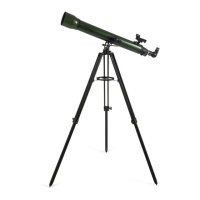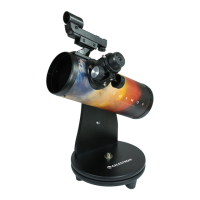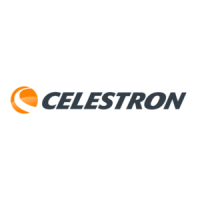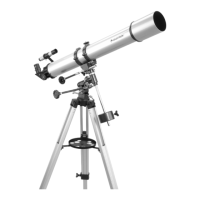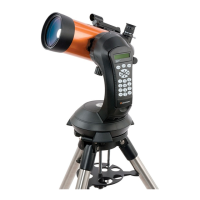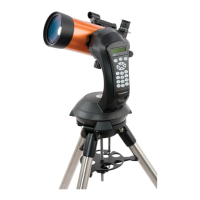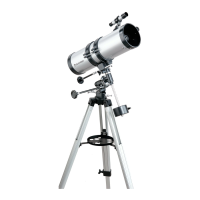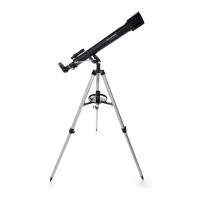Do you have a question about the Celestron FirstScope 80EQ and is the answer not in the manual?
| Optical Design | Refractor |
|---|---|
| Barlow Lens | Not included |
| Aperture | 80 mm (3.15 ") |
| Focal Length | 900mm |
| Finderscope | 5x24 finderscope |
| Eyepieces Included | 20 mm (45x) |
| Magnification with Included Eyepieces | 45x |
| Tripod | Aluminum |
Step-by-step instructions for assembling the Celestron FirstScope 80 EQ telescope components and tripod.
Adjusting the equatorial mount to your local latitude for proper polar alignment and tracking.
Using knobs and cables for precise movement of the telescope in declination and right ascension.
Ensuring the telescope is balanced on both axes for smooth motion and accurate tracking with optional motor drive.
Method for quickly moving the telescope horizontally using the adjustment knob.
Steps to achieve sharp focus and align the finderscope with the main telescope for easier object location.
Final checks for polar alignment, mount levelness, and knob tightness before astronomical observation.
Explanation of the celestial sphere, declination (Dec.), and right ascension (R.A.) coordinate systems.
Procedure for aligning the telescope's polar axis with the celestial North Pole for effective star tracking.
How to use setting circles for right ascension and declination to locate celestial objects from star charts.
Details on calculating telescope magnification using focal lengths of the telescope and eyepiece.
Tips for observing the Moon, including best phases and details visible at different magnifications.
Guidance on observing prominent planets like Jupiter, Saturn, Mars, Venus, and Mercury.
Instructions for safely observing the Sun using a specialized solar filter.
Information on observing star clusters, nebulae, galaxies, and other objects beyond our solar system.
Recommendations for keeping optical surfaces clean and protected from dust and contaminants.
Methods for removing dust and fingerprints from optical surfaces using compressed air or cleaning kits.
Guidance on when to seek professional cleaning services for the objective lens.
Invaluable tool for learning constellations and locating deep-sky objects in the night sky.
Red LED flashlight for reading star maps without compromising night vision.
Compensates for Earth's rotation to keep celestial objects centered in the field of view.
Various eyepieces available to expand the telescope's magnification range.
Filters designed to enhance visual observations of the Moon and planets.
Specialized filter for safe observation of sunspots and solar activity.
Adapter for connecting a 35mm SLR camera to capture images of the Moon.
Details on the one-year limited warranty covering defects in materials and workmanship.
Procedure for obtaining a Return Authorization Number and returning products for service.
